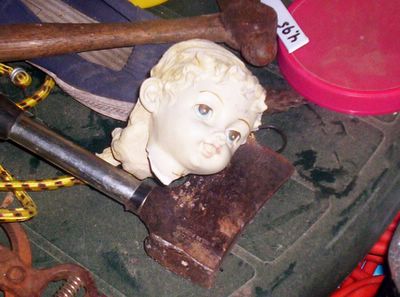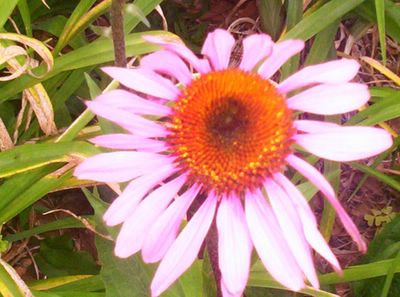Eugene Smith was a photographer who did several photographic essays for Life magazine. He did a photo essay on a black nurse-practitioner from Alabama, one on a place in Japan--Mina Mata-- where industry was dumping mercury into the water, and another one on demonstrations somewhere--I can't remember (I am such a lazy/sloppy writer….forgive me!). The man was on such a thin wire between genius and insanity. He also drank lots of hooch and sniffed a form of speed. I think it might have been something in one of his chemicals used for developing film. He spent a time in the insane asylum too.
He was greatly affected by his photographs of the war. He wanted to show the brutality of war, so that we might guard against it in the future. Part of what happened to him in the war was that he went from seeing the Japanese people as enemies to seeing their suffering and then their humanness. There was a section of the video that showed the Japanese people being forced out of the caves they had been hiding in to escape mortar fire, and there was a particular photo that he snapped of a soldier passing a dying baby up and out of the cave. It is said that was one of his strengths, the ability to capture the emotion of pain (with which we all can identify) in a photograph. He talked about how seeing the faces of the enemy changed him, how seeing their blood and pain made them human again, instead of a faceless and nameless "enemy".
He wanted to use his art to speak truth. He said he went to demonstrations to photograph truth. How hard it must be to have only a black and white photo with which to speak the truth. He talked about the "balance of shading", the contrast of black and white. He also said "the only intolerance you should have is against intolerance itself."
It has been several months since I first watched a video about Eugene Smith in my photography class. I found him to be a multi-faceted and fascinating individual. At the time, I checked him out on the web and I still would like to do some more reading about him, but as I often do, I got distracted.

What brings him back to my wayward mind now is that a copy of this photograph hangs outside the meeting room where my son attends group sessions related to his substance abuse problems, outside the room where we have just completed six weeks of family group sessions along with several other families whose children are also in this particular war (and that is what it is, a war, a war with far too many casualties).
I asked one of the (young!) counselors if he knew anything about Eugene Smith’s background, if he knew the guy drank and had a drug problem. “No, he did not know”, and the irony did not escape him. He said he would have to check that out. But I have been thinking about it, and I think it is so appropriate that the work of Eugene Smith would hang there.
Much of Smith’s work had spiritual implications, as does this photo. Does the darkness surround the children, and are they about to be swallowed up by it? Or are they escaping, and leaving the darkness behind? What better photo to represent the work that is done in these rooms? Good vs. evil, darkness vs. light. Some will get swallowed up, and others will escape. Some will stumble in and out of darkness all their lives, and maybe that is what life is all about. I don't know, but I would keep that photograph there. It is a visual reminder of what happens around there. It is also a study in the contrasts of living with an addict. Smith must have held hope that the light would overcome the darkness, (and so do I). After all, he called the photo "The Walk to Paradise Garden".Lots of people are made uncomfortable by the prospects of having to participate in group sessions like the ones we just came through. My own son has yet to embrace the healing that can come from participating in such a group. He can’t quite appreciate the safety that is there for him, and for all of us. But he had to go, by court order, and maybe there was some small thing that he heard and will be able to remember one day.
I think that might be the biggest hope for a family group, that the parents and the teens, by seeing and talking about some of the hurts and pains of addiction in a safe place, each from their own perspectives, might again see, not "the enemy" (the one who causes my pain, or the one who wants to bind me up with all these rules), but the humanness of each other.

I did this picture in Photoshop with one of my own photos of a place that is special to me. I think I had the quote on here once before. I love it so much. I hate it so much. Substitute the word “life” for the word “photographic” and you’ll see what I mean. It is such a hopeful quote. It seems we always do have potential, as long as we are alive, and I suppose there are always other horizons beckoning. But on the other hand, it also means, to me, that we never completely arrive, that there is always more we can do, more that we need to do, at least not here, on earth. And for me, personally, the part about always being on the threshold kind of annoys me, probably because I spend so much time on the threshold of indecision, but also because I often get stuck on the threshold, unable to go back from whence I came and yet, unable (or unwilling) to step out into the unknown either. That’s what I really love about the quote, about the photograph, about the man. It is all so paradoxical. Darkness? Or light? Hope or despair?
Some days, I just don’t know.


















